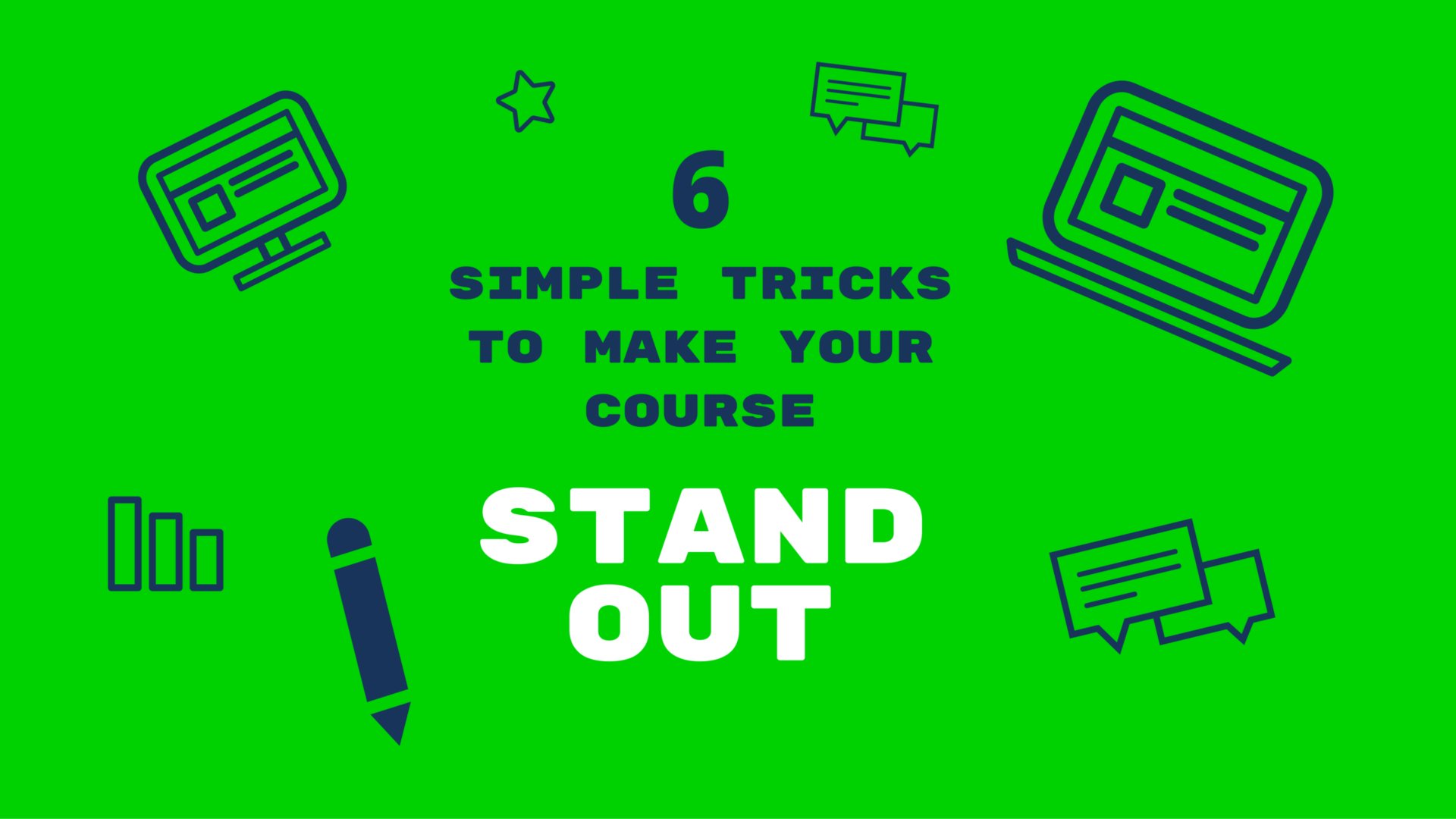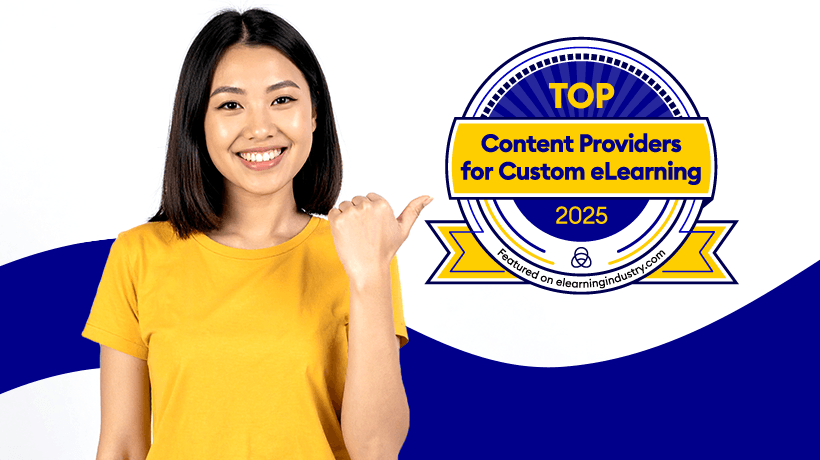How To Source eLearning Content That Counts
Relevant content is the secret ingredient that can transform a boring course into a meaningful learning experience. Relevance is all about finding the perfect eLearning content that aligns with the learning objectives and desired outcomes. As a professional, you should select materials and resources that directly support what you want your learners to achieve. You wouldn't want to attend an online course with outdated information or irrelevant topics, right? So if you're wondering how to pinpoint content that sticks, read on for some top tips.
What To Look For When Choosing Content
Alignment With Learning Goals
The first thing you want to look for, as said above, is that the content aligns with your learning objectives and outcomes. For example, you can't teach about psychology without presenting resources like study guides, journal articles, videos, or other relevant activities. By incorporating meaningful content, you take a step further in equipping your learners with the necessary knowledge and skills to meet the objectives. Plus, this will make them more focused on the process, as they’ll initially have a clear picture of what’s expected of them.
Accuracy
Since your goal is to ensure that your students receive accurate and trustworthy information, it's important to evaluate whether your sources are credible. There's an abundance of information online, and it's easy to fall into the trap of inaccurate material. However, you can assess the credibility of the content by examining the author or organization that created it. For instance, are they experts in their fields? Have they published anything else? Similarly, you should research the content source and see whether it's a well-known platform and respected within your industry. Additionally, content needs to be objective so that your learners can be unbiased and form their own opinions.
Engaging And Interactive Elements
Interactive content encourages learners to actively participate in the lessons since it captures their attention and motivates them to keep working. So, when looking for content, consider engaging elements like quizzes. They’re helping both learners and teachers evaluate performance, but they also create a sense of accomplishment for those completing them. Simulations can also engage learners as they immerse them in real-life scenarios where they can practice their skills. There are many more types of interactive content to choose from, like animations, podcasts, and infographics.
Adaptability To Learning Preferences
Not all learners absorb information the same way or at the same pace. Some prefer reading; others prefer listening to audio clips or watching videos. So, if your content can adapt to different learning preferences, you’ll achieve higher learner engagement. For example, if you deliver them a course that’s mainly full of text, visual learners may lose interest. Instead, if you incorporate multiple formats, you’re more likely to capture the interest of a wider audience. So, don’t hesitate to mix it up and add videos, articles, audiobooks, and other multimedia content to satisfy the needs of as many learners as possible.
Where To Find Interactive And Relevant Content
Open Educational Resources
Open Educational Resources (OER) are basically every piece of educational material that’s free to use. Specifically, there are databases full of content like textbooks, recorded lectures, videos, and others that you can download, share, and even modify. They’re free and flexible and can be adapted to different learning needs or objectives. Also, you don’t need to worry about the legitimacy of the process because the materials come with licenses. There are lots of platforms that offer OER, even if you require something more specific. You can always Google the term and find a repository that fits your niche.
Industry Websites
You can search for content on industry-related websites, as they are full of information about various subject areas. All you have to do is search with a related keyword. You want to focus on websites that are reputable and center on the topic you’re searching for. For example, many universities and institutions offer specific content and educational materials that you can add to your lessons. You can also reach out to industry-related organizations and ask for their contributions or even form partnerships.
Online Communities
Don’t underestimate online communities or social media while searching for relevant content. Platforms like Facebook, Twitter, or LinkedIn can be a source of content recommendations if you search in the right places. By engaging with an online community or forum, you can leverage collective knowledge and ask for members to share content with you. However, don’t forget to share back, as it’s essential to maintain a collaborative spirit. So, join relevant groups, follow specific hashtags and industry experts, and you’re sure to find some valuable resources.
Outsourcing Partners
If your budget allows it, you can look for a partner to help you find relevant content. Content development companies, or Instructional Designers, specialize in creating high-quality material for online courses. They are experienced and can help you in your search or do it for you, saving you time and effort. Additionally, by collaborating with a professional, you’ll have access to plenty of resources you can use afterward, like multimedia elements, libraries, virtual labs, and more. Plus, their guidance and tips will benefit you in the future, helping you create meaningful learning experiences.
Tips For Evaluating And Selecting Content
Evaluate Quality
Ensuring content quality is extremely important, so first, you’ll need to know if your source is credible. For example, is the material written by experts? Is the website known in the industry? Then, you can check the content’s relevancy by evaluating how it will help you with learning objectives and outcomes. If it doesn’t add anything valuable to the learning process, then it would be best to look for something else. Lastly, your content should be updated, so make sure to cross-check if the information presented is timely or if something has changed.
Ensure Accessibility And Inclusivity
Education should be accessible to everyone, regardless of their abilities or background, and this should be reflected in your content. You need to make sure that the content of your choice can be provided in multiple formats to accommodate different needs, such as transcripts of audio clips, subtitles for videos, etc. The written text should be in simple language to help individuals with cognitive disabilities and others with limited literacy skills. Most importantly, when designing content, be mindful of learners with visual impairments and make sure every multimedia element you use is inclusive.
Consider Copyright
As an eLearning professional, you need to be considerate of copyright laws and obtain permissions or licenses if you intend to use someone else's content. Take the time to educate yourself on the matter and ensure that your content comes from authorized sources. If you want to use copyrighted material, reach out to the owner, if necessary, in order to get their permission. However, there are options for royalty-free content, like Creative Commons licenses, which some creators utilize to allow others to have access to their work, or the Open Educational Resources mentioned above.
Conclusion
Relevant and current content is the key to keeping your learners engaged and maximizing their learning experience. By regularly updating your eLearning courses' material, you make sure your learners get the most accurate information that fits their learning needs and helps them achieve their desired outcomes. So, don't let your courses stagnate, and follow our tips to always provide your learners with the appropriate material for their educational growth.
Looking for the perfect content provider for your L&D program? Our list has the leading content development companies to consider.








